The most beautiful Parisian covered passages: our favorite
- October 09, 2020
- culture, news, restaurant, team building, tourism
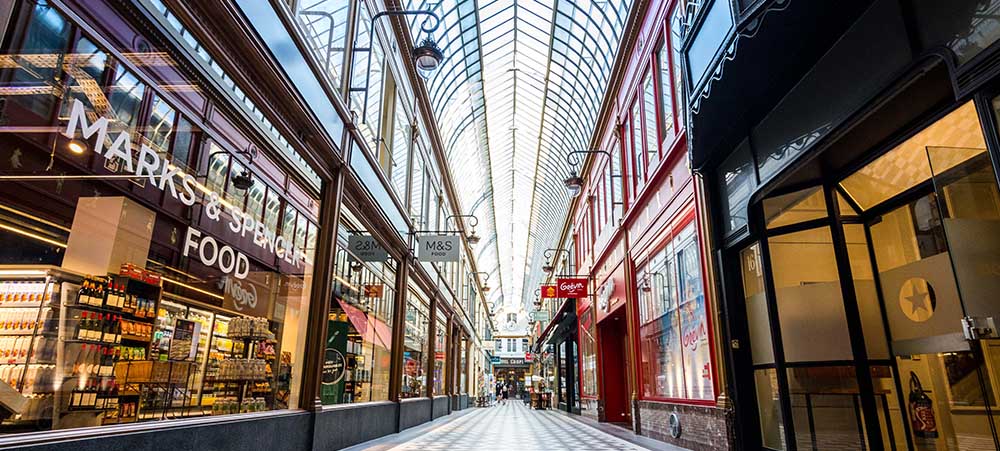
Today we take you with us to explore the most beautiful Parisian covered passages. Learn their history and go with us for a walk through these unique Parisian walkways and follow along!
The Passage des Panoramas: just for your eyes!
Let’s start our walk near the Grands Boulevards metro station with the Passage des Panoramas. This is one of the oldest Parisian covered passages. In 1798, the American ship-owner James William Thayer bought the old private mansion called Montmorency-Luxembourg. One year later, he replaced the gardens at the hotel with the Passage des Panoramas. This gallery initially included two panoramas that offered visitors panoramic views of Paris, Rome, and other cities. Unfortunately these works were removed when the passage was reorganized in 1831.
Today shops and restaurants rub shoulders like the excellent restaurant Canard & Champagne.
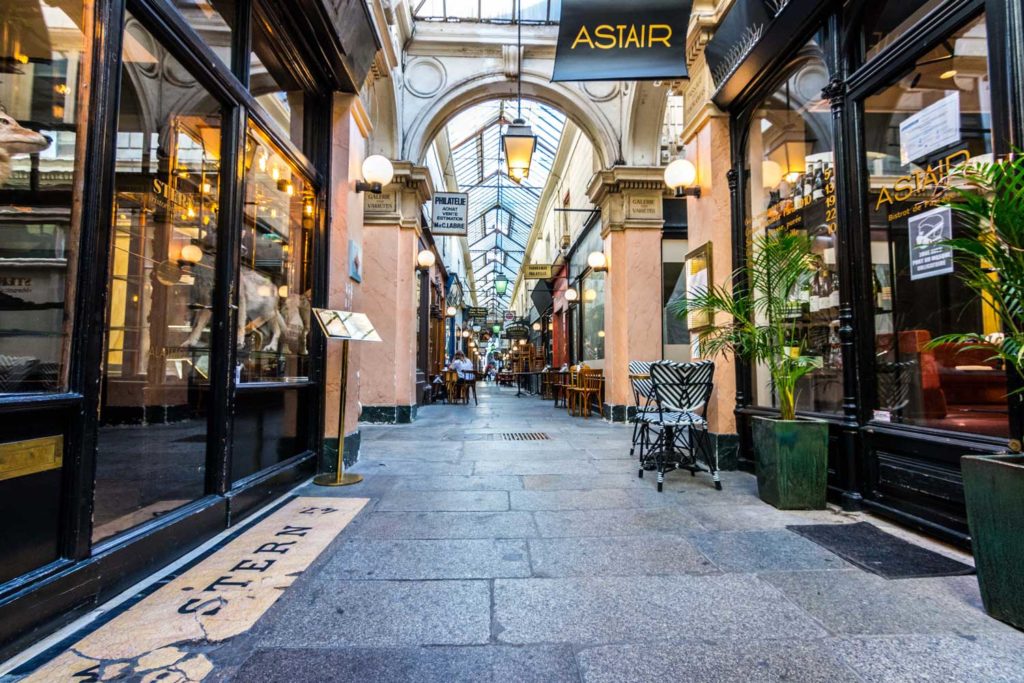
Just an illusion: the Galerie Véro-Dodat
Let’s continue our visit of our favorite covered passages Paris with the Véro-Dodat gallery. Of neoclassical style, this Parisian gallery is characteristic of the real estate operations of the beginning of the 19th century. In 1826, two investors, the butcher Benoît Véro and the financier Dodat, built this passage which offered a pleasant shortcut between two busy places: the Palais-Royal and Les Halles. This passageway was designed to give an illusion of depth thanks to the tiles decorated with a black and white diagonal pattern, the low ceiling height and the strictly horizontal alignment of the stores. You have to see it in person to take it all in.
» READ ABOUT –A fun treasure hunt in Paris in the heart of the Covered Passages for your next team building
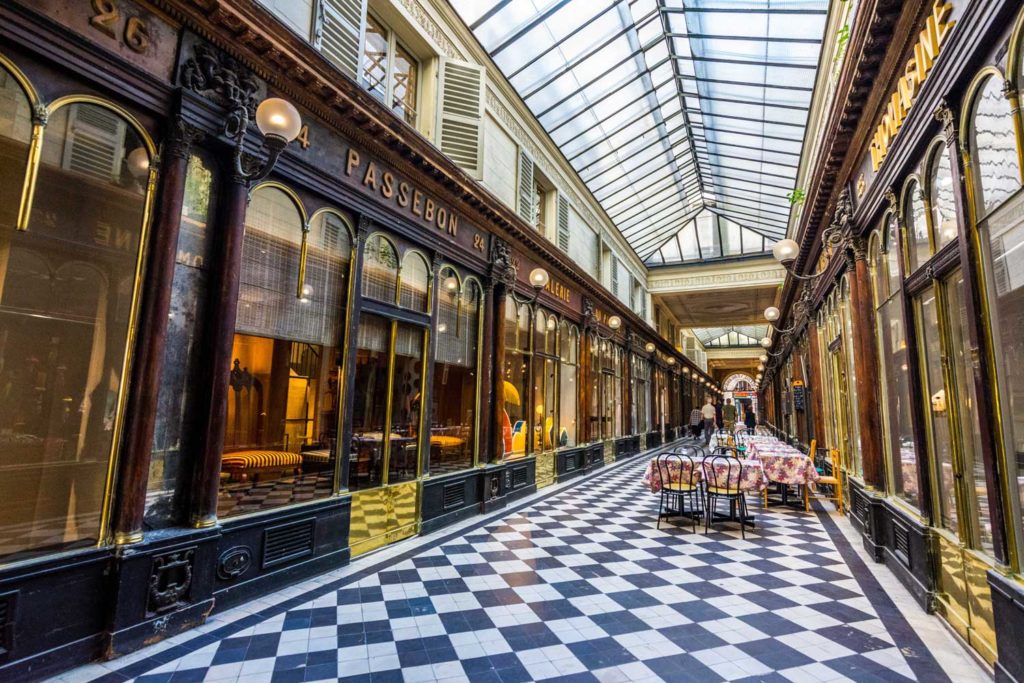
Parisian covered passages: the Passage Jouffroy
Join us now at the third of the Parisian passages of our selection, the passage Jouffroy. This passage, built in 1845 by Félix de Jouffroy-Gonsans, is a testament to technological advancements in the 19th century. You can see this in the glasswork within wrought iron – a revolution in architecture from this period (just like the Eiffel Tower) – as well as the fact that this passage was the first to have subfloor heating.
In 1882, journalist Arthur Meyer and cartoonist Alfred Grévin opened the eponymous museum close to this gallery. Don’t hesitate to go and meet the many wax figures in the museum. Not far away, stop in a mythical brewery of the capital: the Bouillon Chartier.
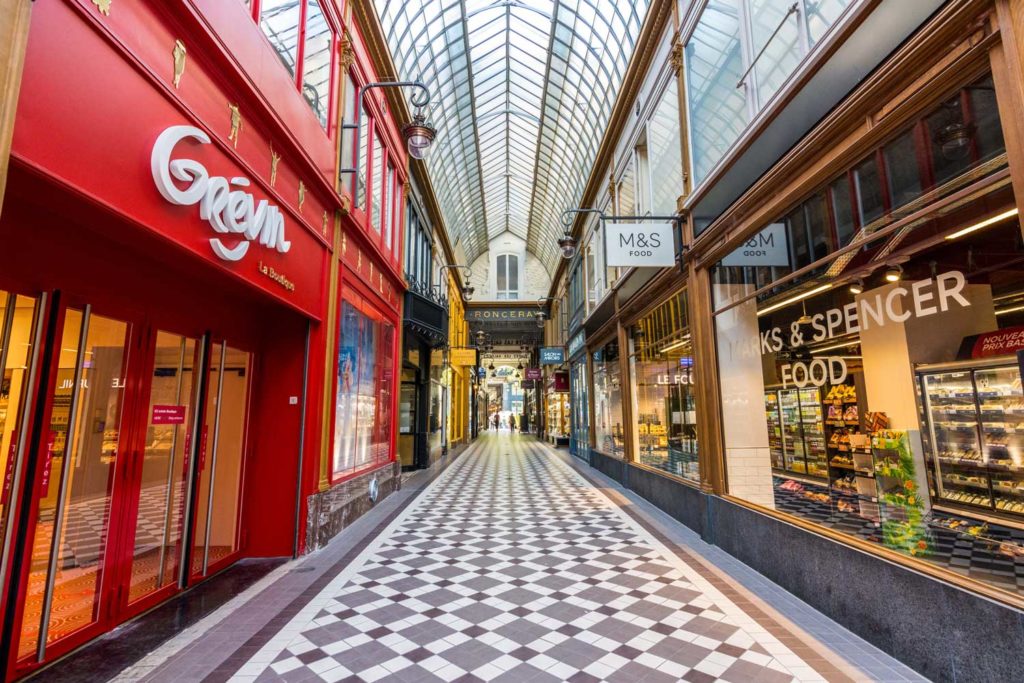
The most royal: the Passage of the Princes
This covered passage was built in 1860 by banker Jules Mirès. This passage (which initially went by Jules’ name) was the last passage built in the 19th century. The “La vie moderne” gallery used to display impressionist paintings. Destroyed in 1985 for a real estate project, it was reconstructed 10 years later and has the same name as the Princes hotel nearby (which is now gone). During the walk, there will be something for young and old alike, as the latter will be delighted to admire the windows of the toy stores that make up the passage of the Princes.
Special mention at Christmas time where this gallery is beautifully decorated.
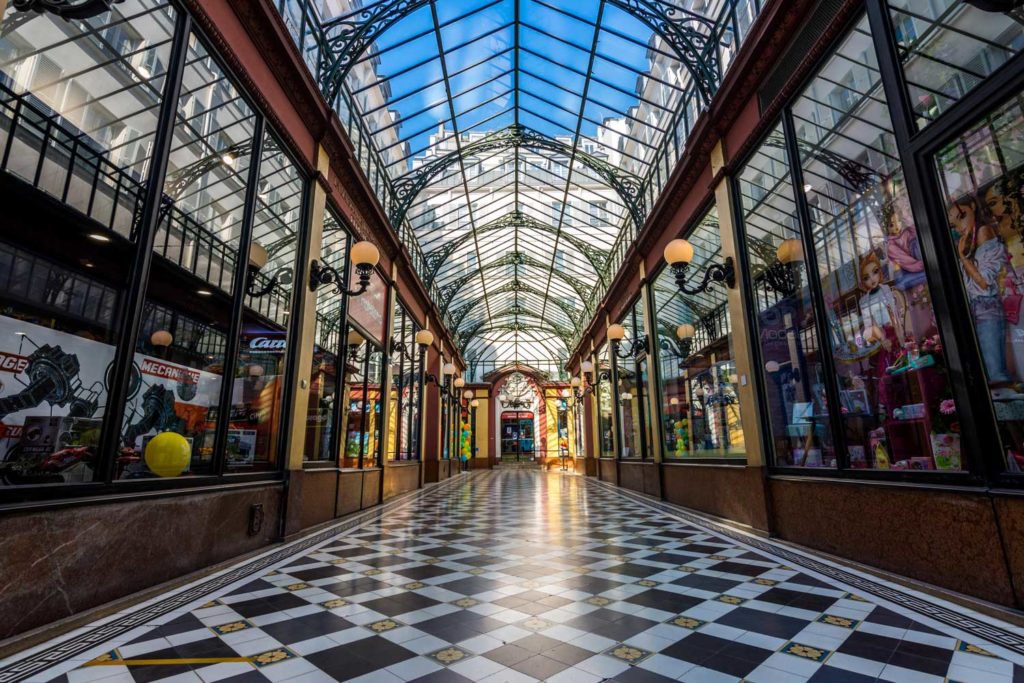
The most beautiful covered passages in Paris: the Passage de Choiseul
The passage of Choiseul was built between 1825 and 1827 on the initiative of the bank Mallet et Cie in order to carry out an operation of a speculative nature. This passage is the longest of the Parisian covered passages with a length of 190 m for a width of 3.7 m.
The passage of Choiseul is also known to shelter the theater of the Bouffes Parisiens. Finally adjoining this passage, you can discover the small passage Saint-Anne, where Allan Kardec, founder of modern spiritualism, owned his home.
The walk is digging, why not stop not far from the passage to the restaurant les Bols de Jean!
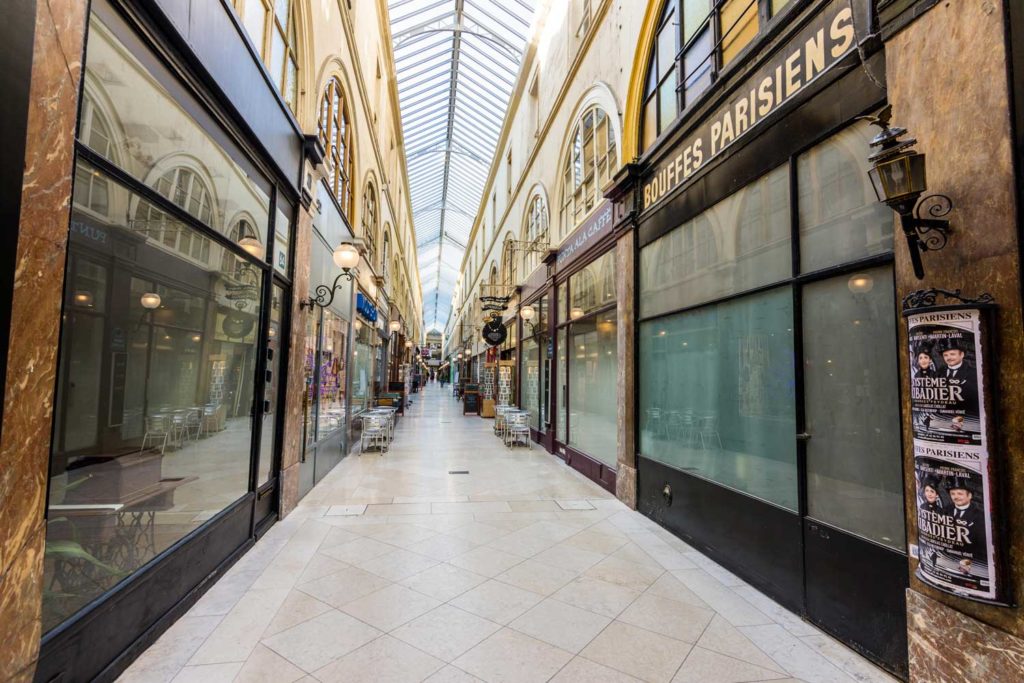
The most elegant: the Galerie Vivienne
We couldn’t finish our rich tour of the Parisian covered passages without stopping at the magnificent Vivienne Gallery. Established in 1823, this elegant neo-classical gallery is known for its antiquity-inspired decor and the intricate mosaic on its ceiling. Popular during the Second Empire of Napoleon III, the passage contained many luxury businesses.
This gallery is still today one of the most popular in Paris.
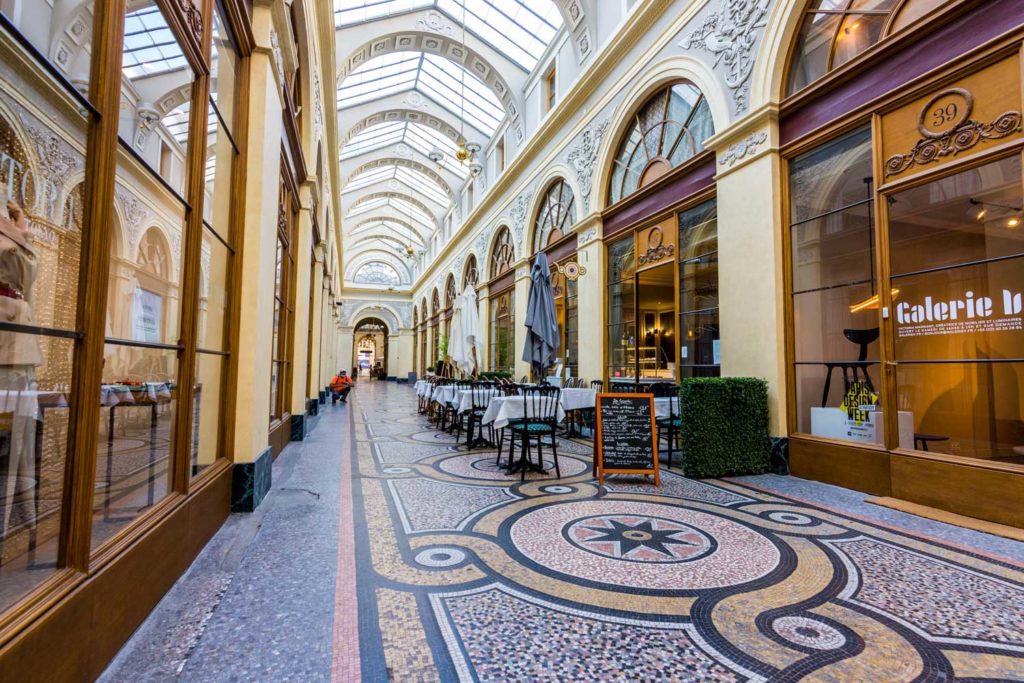
This is the end of our walk but this list is of course not exhaustive. Do not hesitate to come and discover them during our urban rally treasure hunt Passages Couverts where you will find some of those mentioned in our article and others more hidden.
For the other curious ones, you can also browse our page of the best corporate treasure hunts in Paris.
Photo credit: Booster2Success
Booster2Success offers playful team building in different areas of Paris.
CONTACT US to organize an event in Paris.
